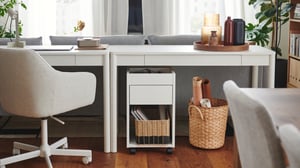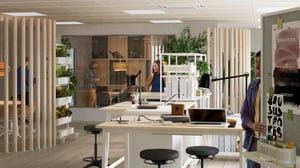SEGLARÖ Parasol, hanging, beige/tilting,
How to get it
You can tilt and rotate this free-hanging parasol without having a pole that blocks your view or gets in the way. It does its utmost to protect you against the sun with 50+ protection against UV-rays.
Article Number303.878.68Product details
The fabric gives excellent protection against the sun’s UV rays as it has a UPF (Ultraviolet Protection Factor) rating of 50+, which means it blocks 98% of the ultraviolet radiation.
You can easily turn the parasol to shade different areas since it can be rotated 360 degrees.
You are protected from the sunshine all day long, since the parasol can be tilted.
The air vent reduces wind pressure and allows heat to circulate.
The parasol is easy to open or close by using the crank.
With a light, passing rain shower, you can stay and relax under the parasol since the canopy repels water.
The parasol pole is made of aluminium which means it won’t rust.
The strap with buckle keeps the fabric in place when folded.
IKEA of Sweden
Weight & measurements
Weight.: 200 g/m²
Length: 330 cm
Width: 240 cm
Height: 260 cm
Reviews

Our take on polyester
Polyester is a durable, wrinkle-resistant and easy-care material that is ideal for many home furnishing products like rugs, pillows, quilts and cushions. The downside to virgin polyester is that it is made from oil, coal or natural gas. This means that when we use virgin polyester, we are exhausting the planet’s natural resources. Our response to this, is to replace all virgin polyester with recycled in our products. In 2020, we achieved the milestone of replacing 79% of the virgin polyester used in IKEA textile products and will accelerate the transformation towards the aim of only using recycled polyester throughout the product range where polyester is used.
Virgin vs recycled polyester
Originally, all polyester was made from oil-based raw materials which are not renewable but we are switching to only using recycled polyester. The good thing is that polyester can be recycled over and over, without negatively affecting the quality of our products. When we make products from recycled polyester, we give a second life to material that is not biodegradable and reduce the amount that may otherwise end up in landfill or the ocean. Instead, PET and other sources of polyester are used to make textiles, storage boxes, kitchen fronts and even lamps. Recycled polyester is just as good as virgin polyester in terms of looks, quality and function, and produces about 50% less in CO2 emissions. And the material is just as clean and safe in every way.
Some challenges with recycled polyester
Recycled polyester makes us less dependent on oil. The amount we convert, is equal to the amount of virgin fossil fuel we eliminate from our polyester raw material (this excludes potential dyeing and other post recycled polyester production treatments). With some exceptions, the challenge is not the conversion of polyester into recycled itself, but to make it available to everyone by keeping it affordable. Buying low environmental impact products often comes with a higher price tag. We want to change that by working to make recycled polyester products more affordable and accessible to the many people.
Only recycled polyester
IKEA is committed to end the dependency on virgin fossil materials and only use renewable or recycled materials by 2030. We are accelerating this movement for polyester in our range and aim to replace all virgin polyester in our textile products with recycled. In 2020, IKEA replaced 79% of the virgin polyester used in IKEA textile products with recycled polyester. In volume, this means we converted 130,000 metric tonnes of recycled polyester, and saved 200,000 tonnes of virign polyester. We haven’t reached our 100% goal yet, but we have come far and overcome many obstacles on the way. These volumes make us a leader in converting to recycled polyester and we hope that our decisions can inspire and motivate whole industries to change.
Responsible sourcing
At IKEA, we demand that all recycled polyester used in IKEA products shall come from recyclers that are compliant with the Global Recycled Standard and traceability is secured to the IKEA product through requirements toward the IKEA Suppliers. By only using recycled polyester that meets the Global Recycled Standards we manage to secure social, environmental and chemical practices at the recycler’s production. We believe that the GRS standard is the best standard on the market today. We work with our partners and textile organisations such as Textile Exchange to further improve standards on recycled materials, including traceability of material beyond the recycling units.
Material
What is aluminium?
After iron, aluminium is the world's most used metal and has a very wide range of uses. It’s easy to shape and lightweight, but is still strong and durable. In our range we use it for things like kitchen utensils, curtain rods and tealight cups. A big advantage with aluminium is that it can be recycled again and again without losing its quality. Recycling consumes only a fraction of the energy required to produce aluminium from new raw materials.
















